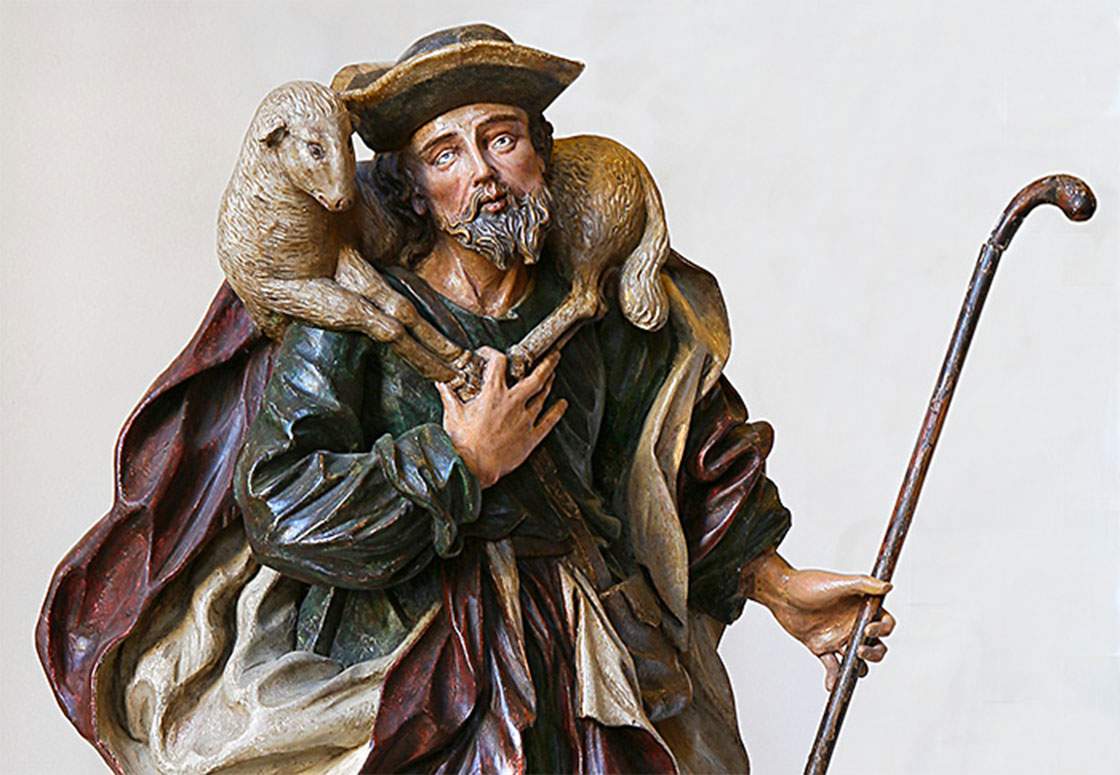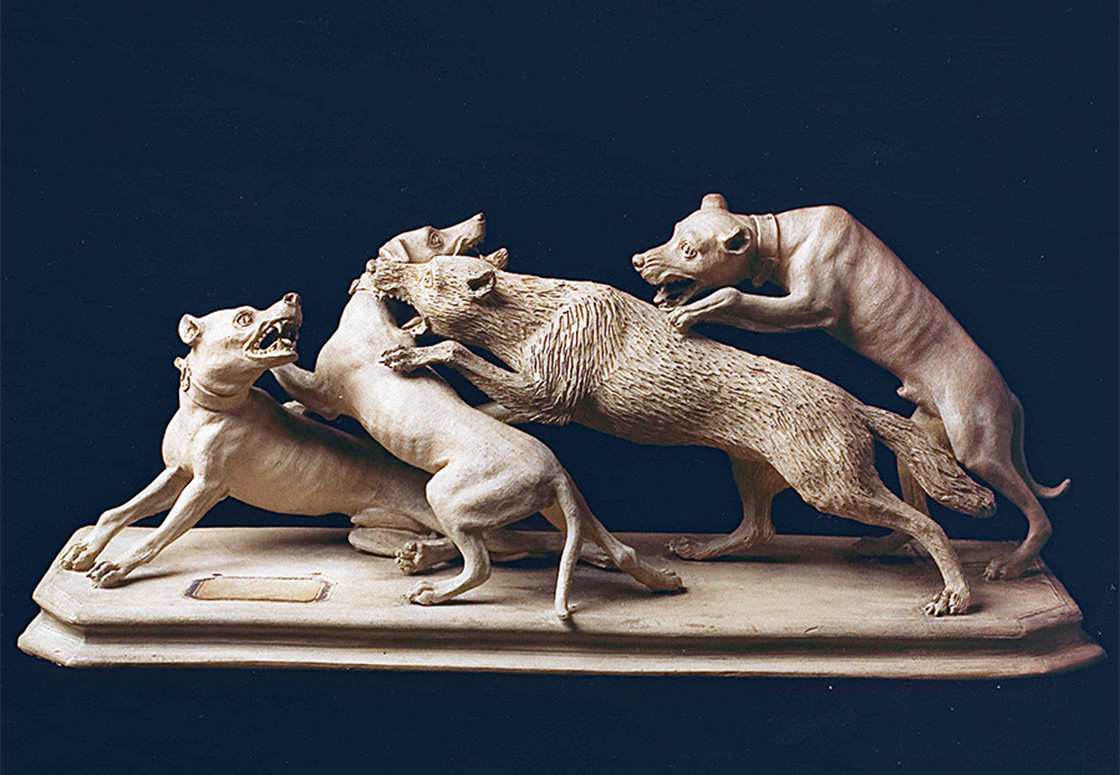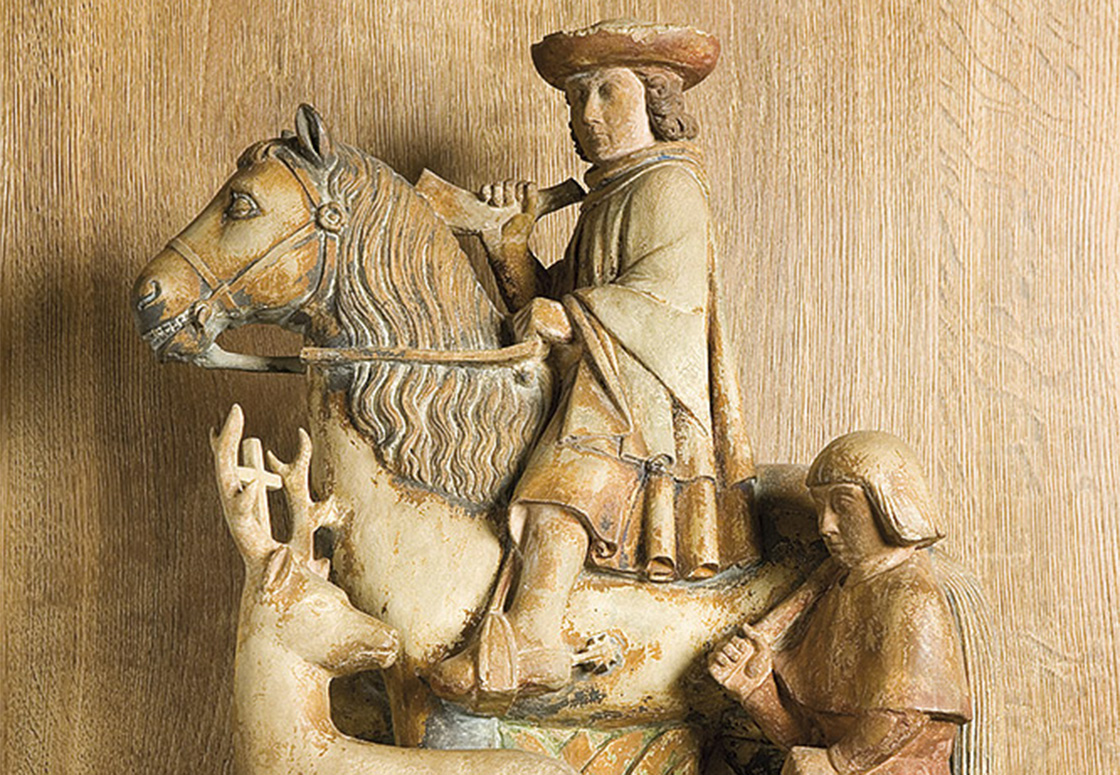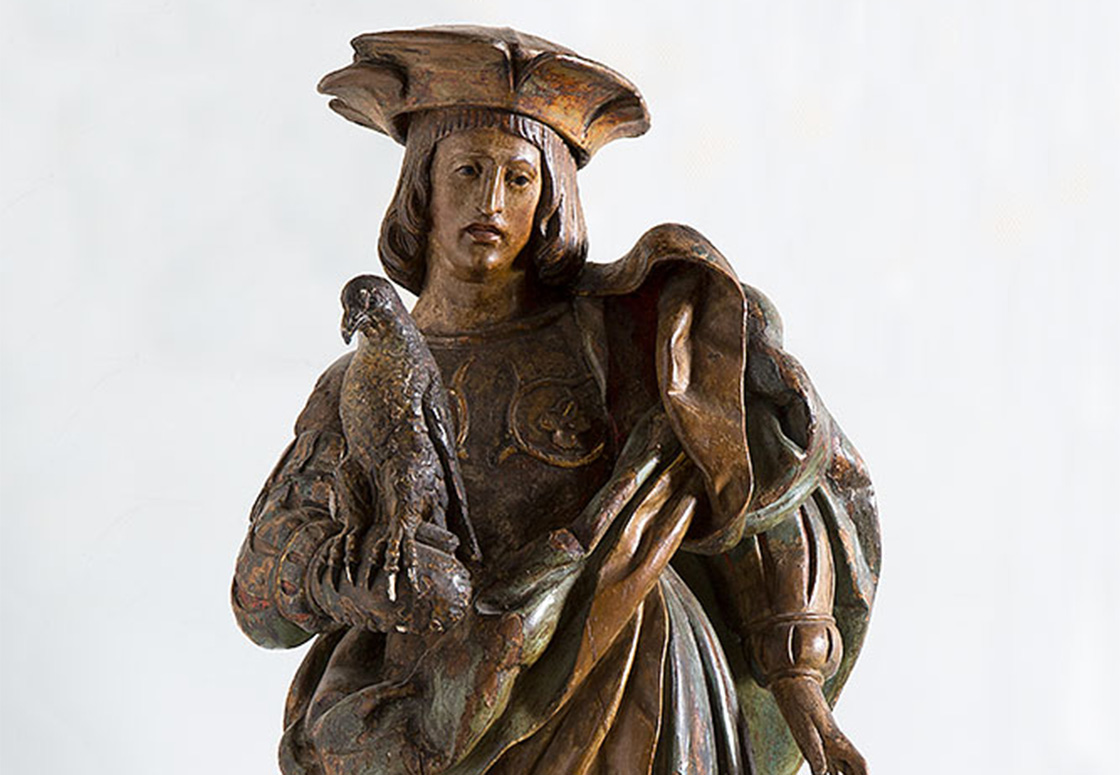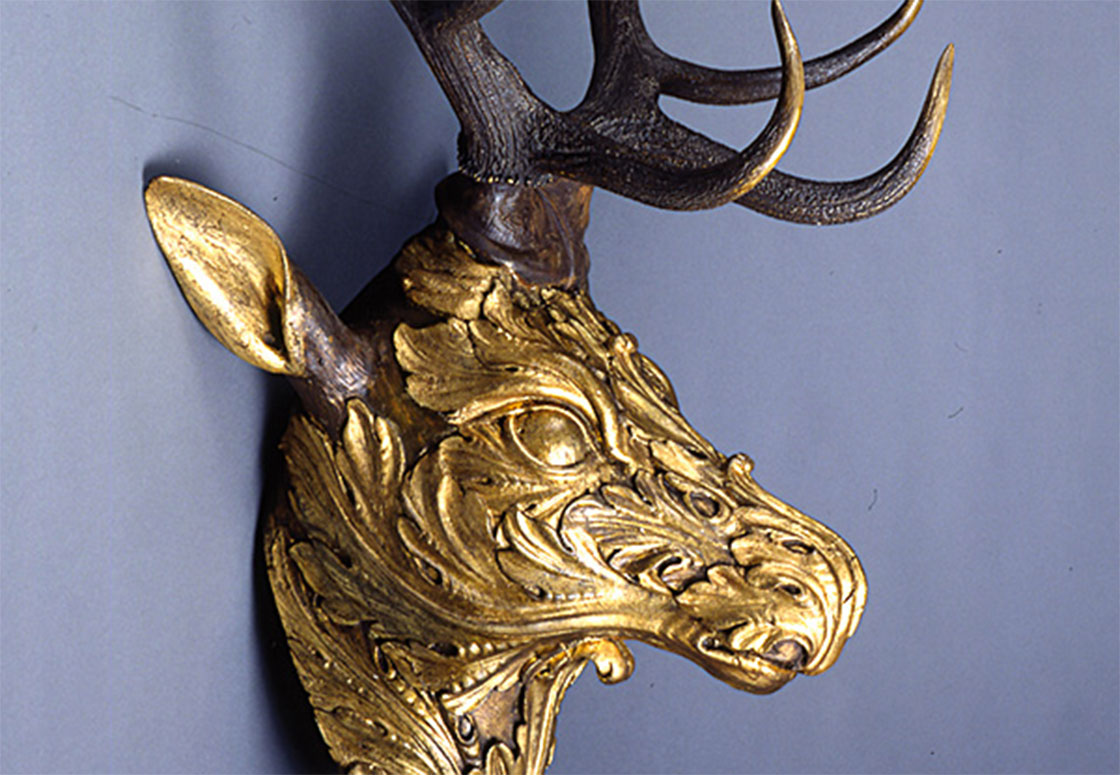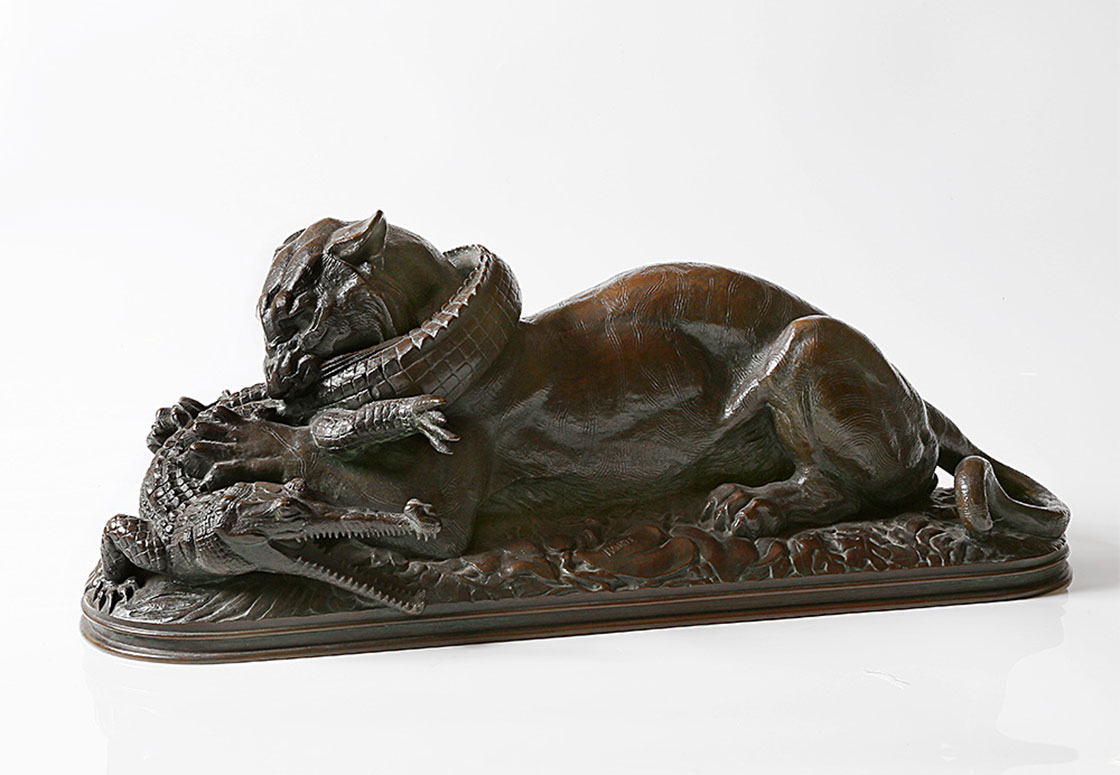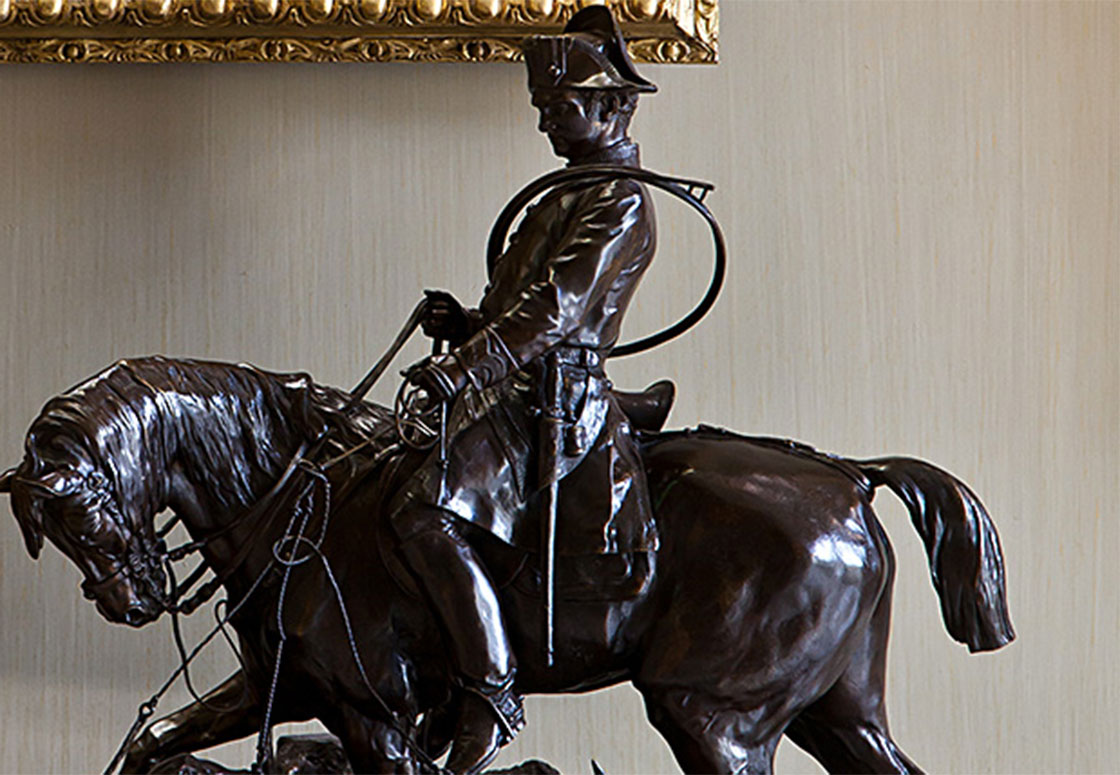The good shepherd
A parable in the Gospel of Saint Luke (15:3-7) presents Christ as the Good Shepherd who watches over his flock. In the early days of the Church, Christ is most often depicted as a young, beardless man holding the lost sheep on his shoulders. In this representation, he crushes the head of the wolf with his foot. Since the Middle Ages, the animal has been associated with the devil. Indeed, it is considered as the devourer of the lamb, a Christian symbol. At that time, the deforestation and the wars push the wolf to become more aggressive towards the men and the livestock.
This representation of the Good Shepherd trampling on the head of the wolf can be compared to that of the woman of the Apocalypse (the Virgin Mary) standing on a crescent moon, crowned with stars and crushing the serpent with her foot. The sculptor gives Christ a submissive expression of hope and spirituality. Ignaz Lengelacher works in wood, stone and stucco. First active in Moravia (eastern part of the present Czech Republic) between 1725 and 1750, he worked for the bishop of Styria from 1750 onwards and ended his career at the court of Karl Friedrich in Baden.


